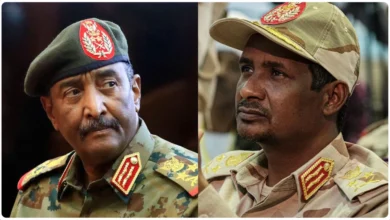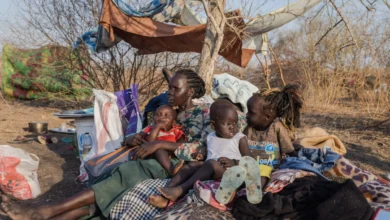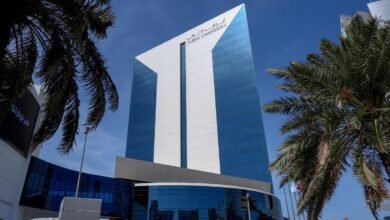
Beyond the Louver: Inside UAE’s Ambitious New Cultural Landmarks
UAE’s next wave of world-class museums signals an ambitious cultural vision that will reshape the scene across the region. The Natural History Museum Abu Dhabi will open this November on Saadiyat Island. The museum will span 35,000 square meters, making it the region’s largest facility of its kind. This remarkable space will showcase a wealth of treasures that includes Stan, a nearly complete Tyrannosaurus rex skeleton. Visitors will also find a 25-meter blue whale specimen and the Murchison Meteorite with grains older than our Solar System.
The country’s museum expansion plans extend beyond this landmark project. The Zayed National Museum will open its doors on December 3, 2025, and celebrate UAE’s founding father’s life and vision. The museum will display rare artifacts including the Abu Dhabi Pearl – one of the world’s oldest natural pearls. The Guggenheim Abu Dhabi plans to welcome visitors in 2026. Dubai’s cultural scene will feature the innovative Dubai Museum of Art (DUMA) that appears to float above Dubai Creek’s waters. Renowned architect Tadao Ando designed this five-story structure to blend local culture with modern architecture. The building will house exhibition galleries, a restaurant, and VIP lounge.
Cultural Storytelling Through Architecture
UAE architects create structures that tell stories of national identity through innovative design. These buildings stand as physical narratives of the region’s heritage, environment, and aspirations.
Natural History Museum: Desert-inspired structure
Mecanoo’s design of the Natural History Museum Abu Dhabi appeals to natural rock formations that reflect the museum’s goal to improve understanding of the natural world. The structure spans more than 35,000 square meters and employs geometry as its main theme, with pentagonal shapes that mirror cellular structures throughout its design. Water and vegetation become central elements that serve as powerful symbols of life in the desert. The design choices create an immersive environment that connects visitors to Abu Dhabi’s distinctive landscape. Visitors experience the region’s geology through the museum’s exterior even before entering the galleries.
Zayed National Museum: Falcon wings and native gardens
The Zayed National Museum stands as the centerpiece of the Saadiyat Cultural District, with Foster + Partners creating a striking design inspired by falcon wings in flight. Five lightweight steel structures rise above a man-made mound and serve both as architectural statements and functional solar thermal towers. These wing-like forms honor Sheik Zayed’s passion for falconry and employ ancient sustainability techniques. The towers open at the top to draw hot air out through the negative pressure on their lee-side. A 600-meter outdoor gallery, the Al Masar Garden, links the museum to the coast. Native plants represent desert, oasis, and urban environments in this landscape, with a working falaj irrigation system that showcases centuries of ingenious water management techniques.
Dubai Museum of Art: Sea and pearl symbolism
Tadao Ando’s Dubai Museum of Art (DUMA) design draws inspiration from the sea and pearl—two profound symbols of Dubai’s maritime heritage. A curved shell encloses a circular exhibition hall in this five-story structure, representing unity and continuity. The museum seems to float above the water on an artificial jetty extending into Dubai Creek, with palm trees surrounding it. Smooth white panels fold and twist toward a glazed opening on its distinctive façade, while triangular apertures pierce the surface. The exterior absorbs amber tones at sunset, which softens its engineered geometry. Curved concrete walls frame galleries around a central oculus inside. Daylight channels downward in a pearlescent glow that creates a visual effect similar to a pearl’s shimmer.
Immersive and Interactive Experiences
Image Source: Artnet News
UAE’s new museums go beyond architectural beauty to create transformative experiences that challenge the line between art and audience. These institutions welcome technology to create dynamic, individual-specific experiences that adapt with each visitor.
TeamLab Phenomena: Light, sound, and water zones
TeamLab Phenomena Abu Dhabi represents a groundbreaking multisensory art experience in the Saadiyat Cultural District. This 17,000-square-meter facility houses artworks that adapt through light, sound, and movement interactions, unlike traditional static displays. The venue has distinct Wet and Dry areas where installations react to visitors’ movements, which creates unique bonds between guests and art.
Founder Toshiyuki Inoko says, “The artworks in teamLab Phenomena do not exist independently but are created by the environment”. These installations can naturally restore themselves even after disruption, but they vanish completely when environmental conditions shift. Guests find themselves surrounded by vivid landscapes where boundaries fade away—butterflies dance across mirrored walls, light streams climb columns, and floating objects glow as others skip across them in water-based installations.
Al Maqta’a Museum: Customs house turned exhibit
Al Maqta’a Museum has reopened with thoughtful heritage preservation at its core. The museum sits inside Al Maqta’a Fort’s historic walls at the Maqta Conservation Area’s heart. This building monitored movement between Abu Dhabi Island and the mainland as a customs house and police station in the 1950s.
The Department of Culture and Tourism – Abu Dhabi and Abu Dhabi Police have rehabilitated the museum extensively. Visitors now explore engaging exhibits that showcase vintage police cars, 1950s uniforms, and historical documentation. The museum’s preserved architectural features blend with new additions like a coffee shop, children’s playground, and a photo-worthy miniature of Al Maqta’a Bridge.
Educational programs and workshops
These innovative spaces serve as hubs for educational initiatives. The museums provide guided tours, hands-on workshops, and interactive learning spaces that cater to all age groups. Teachers can access specialized training programs to boost their creative learning techniques and interactive teaching strategies. These programs help preserve history and cultural identity while building critical thinking, problem-solving abilities, and communication skills.
Preserving and Reimagining Heritage
Image Source: Museum of Wander
The UAE’s museum development celebrates millennia of history while welcoming innovation. Ancient stories find new life in modern settings through careful restoration and reimagining of historic institutions.
Al Ain Museum: UAE’s oldest museum reborn
Sheik Zayed bin Sultan Al Nahyan founded Al Ain Museum in 1969, making it the UAE’s first cultural institution. The museum opened its doors again in October 2025 after extensive renovation. It kept its historic structure but added modern exhibition spaces. The renovation team found important archeological sites during their work. They uncovered an ancient irrigation system and early building foundations that visitors can now explore. The refreshed museum spans 8,000 square meters and houses artifacts that are over 8,000 years old.
Zayed National Museum: 300,000 years of history
The Saadiyat Cultural District will welcome the Zayed National Museum in December 2025. This museum tells the UAE’s complete story from prehistory to today. Its collection includes remarkable Paleolithic artifacts that are 300,000 years old. One notable piece is a stone tool found at Jebel Hafit in Al Ain. Visitors can explore six permanent galleries on two floors. Their experience starts at Al Masar Garden, an outdoor space that shows how the UAE’s landscape shaped life here.
Artifacts like the Abu Dhabi Pearl and Magan boat
The museum’s treasures include the Abu Dhabi Pearl, which experts have certified as the world’s oldest natural pearl at 8,000 years old. Scientists found this tiny pearl at Marawah Island in 2017. It measures less than a third of a centimeter across. The museum also features an 18-meter Magan boat built using 4,000-year-old methods described on a Bronze Age clay tablet. The boat proved its seaworthiness in recent trials. It sailed 50 nautical miles in the Arabian Gulf and reached speeds of 5.6 knots with its goat hair sail.
Modern Art and Global Dialog
UAE’s cultural institutions act as global crossroads where artistic traditions join together to create international dialog through contemporary expression.
Guggenheim Abu Dhabi: Cross-cultural collections
Guggenheim Abu Dhabi will open its doors in 2026 as a dynamic platform that presents local, regional, and international art. The museum’s collection puts special emphasis on works from West Asia, North Africa, and South Asia to align with today’s interconnected art world. Frank Gehry’s inventive design features asymmetric cones that surround the main building. These cones serve dual purposes as entrances and exhibition spaces. The museum commissions works to create lasting conversations between the institution and communities both locally and globally.
Dubai Museum of Art: Platform for emerging artists
Sheik Mohammed bin Rashid Al Maktoum revealed DUMA, which shows Dubai’s ambition to become a global capital of culture and creativity. The museum will host artist talks, panel discussions, and educational programs beyond its exhibitions. DUMA sees itself as a global platform that brings together both new and experienced artists. The museum’s collection and initiatives unite different voices and use art to spark empathy, curiosity, and social change.
UAE Museum of the Future: A creative economy hub
The Museum of the Future stands as the world’s largest idea lab and serves as a talent incubator for scientists, thinkers, and researchers. This creates a launchpad for initiatives and human knowledge projects that drive social, economic, and human development. The museum spreads knowledge, develops future forecasting tools, and tracks major transformations and trends. It showcases ground research while building strategic collaborations between academia, industry, and government.
The UAE stands ready to experience a remarkable cultural renaissance as world-class museums prepare to open their doors over the next several years. These architectural marvels share compelling stories through their groundbreaking designs. The Natural History Museum draws inspiration from desert landscapes, while Zayed National Museum features falcon-wing towers, and Dubai Museum of Art showcases pearl-like qualities. On top of that, these institutions exceed traditional museum experiences by creating immersive environments where visitors participate rather than just observe.
These cultural landmarks serve a deeper purpose beyond their artistic value. They create a bridge between present generations and a rich heritage that spans thousands of years. Treasures like the 8,000-year-old Abu Dhabi Pearl and the reconstructed Magan boat stand as testament to this legacy. The UAE balances its past and future by creating spaces that honor historical narratives while encouraging global artistic dialog.
The bold scale of these projects shows UAE’s commitment to become a worldwide cultural hub. Paris has its Louver and New York has the Metropolitan Museum, but the Emirates now shapes its own distinctive cultural identity. These institutions will without doubt revolutionize how visitors and residents participate in art, history, and breakthroughs.
This cultural transformation reaches beyond esthetic appreciation. Museum educational programs develop critical thinking and creativity, while shared environments promote cross-cultural understanding. The UAE emerges as a cultural crossroads where east meets west, tradition meets progress, and local stories gain global significance.
New landmarks rising across Abu Dhabi and Dubai represent more than just buildings – they embody a national vision. The UAE builds a future where cultural excellence and economic prosperity stand together, securing its position as both heritage guardian and artistic pioneer.






